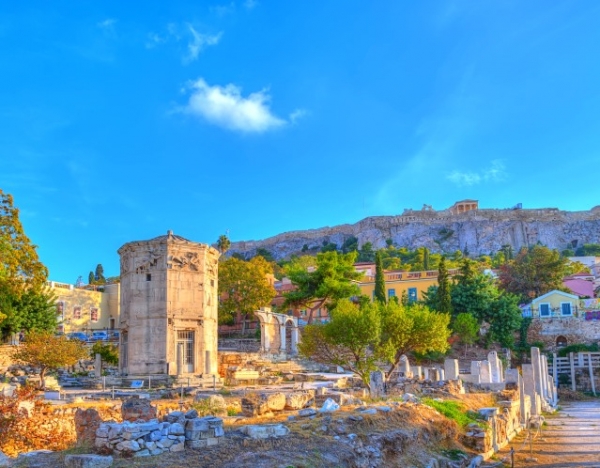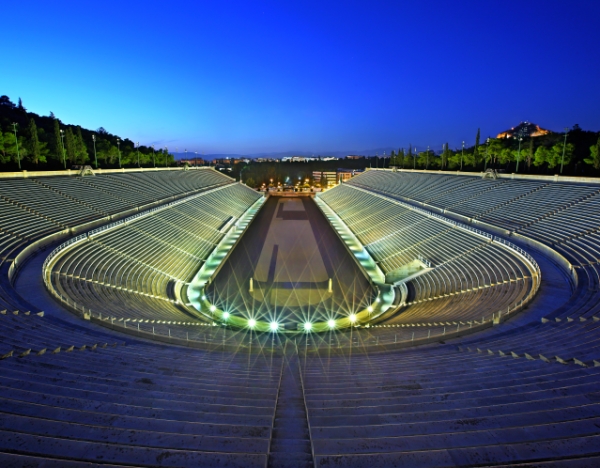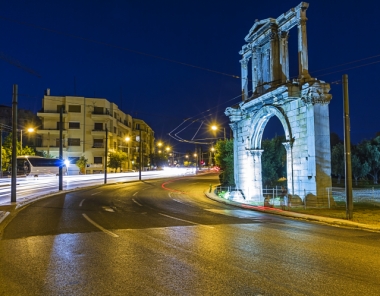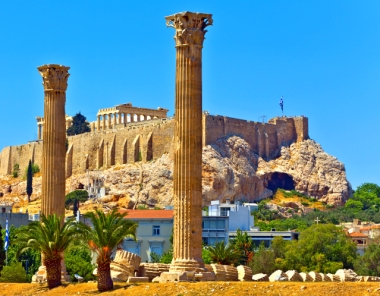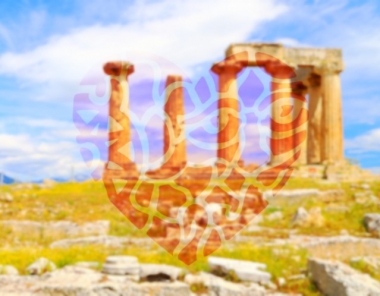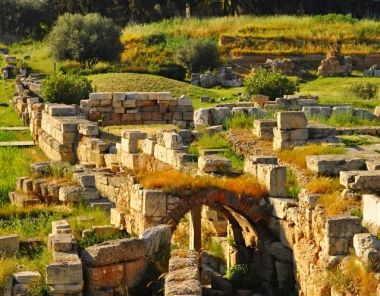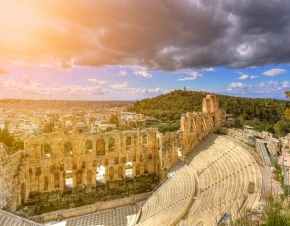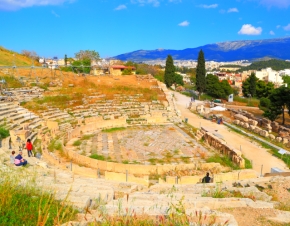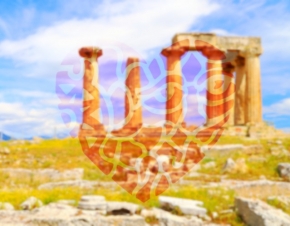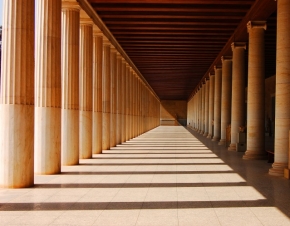The Roman Agora is located in Plaka, the picturesque neighborhood just below the Acropolis. It was developed between 19 and 11 BC and gradually flourished due to Roman emperors' donations, euch as Julius Caesar and Hadrian. It was the commercial center of Athens in Roman times.
Within the area of the Roman Agora is one of the most distinctive buildings of ancient Athens, the Winds or more correctly the Clock Tower of the Winds. It is a marble building in shape of an octagon, with 12 m height, that was constructed by the astronomer Andronikos from Kyrros in the mid 1st century BC. In antiquity it functioned as a solar and hydraulic clock but also as a meteorological station, maybe the oldest in the world. The name Winds was given to the building by the inhabitants of Athens, because of the winds that were engraved and inscribed with their names in each of the eight sides of the building. At the top of the building there was once a vane and depending on its position, market traders and passers-by always knew what kind of wind was blowing.
A little further away from the Temple of Olympian Zeus, there is the Panathenaic Stadium also known as Kalimarmaro.
The first stadium to stand in this position was constructed around 330 BC and is used in the leading festival of Athens, the Great Panathenaia- Panathenaic Games. The shape of the stadium is typical of the time: a line with spectators seated on the three sides.
During the reign of Hadrian, Herod Atticus rebuilt the stadium, made the platforms marble (instead of wood) and expanded it so to fit 50,000 spectators. He also changed its shape, which became like a horseshoe, just as it is today.
During the Middle Ages the stadium was stripped of all its marbles and abandoned. In the late 19th century, when the Olympic Games were revived, the Panathenaic Stadium was fully reconstructed, funded by the national benefactor Georgios Averof, whose statue is now in front of the Stadium. The Panathenaic Stadium was built entirely from the famous Pentelic marble, so it is called "Kallimarmaro"(good-marble) and has a capacity of over 80,000 spectators. In 1896 the first Olympic games were held here, with Greek Spyros Louis being the first Marathon winner. Since then, the Panathenaic Stadium is used for a variety of sporting and cultural events. It goes without saying that every year here is the finish line of the authentic Athens Marathon, while several concerts have taken place here.
The Odeon of Herodes Atticus (or simply Herodium) is right beneath the Acropolis, at the foot of the sacred rock. The odeon was built in the 2nd century AD, with money given by the rich Athenian Herodes Atticus in memory of his beloved wife Rigillia.
Herodion was used mainly for music events, was roofed with wooden ceiling and could accommodate 5000 spectators. It had 32 rows of marble stands, and a semicircular orchestra with three-storey stage building.
Probably the Odeon only worked for about a century, for it was also destroyed during the raid of the Heruli (267 AD). The roof burned completely and with the passage of time, dirt filled the bleachers.
Herodion was not restored until 1953. Since 1957 it hosts great cultural events, where renown artists from all over the world take part, while it is also hosts a part of the famous Athens Festival.
The Ancient Theatre of Dionysos used to be right beneath the Acropolis, at the foot of the sacred rock. The theater, which is the most important known theatrical space of ancient Athens, was founded around the 6th century BC and then took various forms over the years. The number of spectators that could be seated is estimated to surpass the 15,000.
This is the area where the Great Dionysia took place, being the most important celebration in honor of the god Dionysus. It is probably within these celebrations that all the works of leading ancient playwrights such as Aeschylus, Sophocles, Euripides and Aristophanes first appeared. The performances were watched all Athenian citizens and expenses were assumed by the more affluent , with so-called "sponsorship".
The raids of Silla (86 BC) and the Heruli (267 AD) did not leave the Ancient Theatre of Dionysus intact, so now only a small part of it survives.
At the edge of the Ancient Agora of Athens is the temple of Hephaestus, best known as Thissio. The temple was built between 450 and 420 BC in unknown architect plans and exemplifies the Doric order. It is also made from the famous Pentelic marble and the temple has a total of 34 columns (6 on the front and back and 13 on the sides). The fronts of the temple were decorated with themes from Greek mythology, including the labors of Hercules and the Athenian hero's Theseus (of which it is probable that it got the name Theseion-Thisio).
The Temple of Hephaestus is one of the best preserved temples in the world and to this probably contributed greatly the fact that it was converted into a Christian church (St George) in the 7th century AD, thereby avoiding total destruction. It is worth-noting that because during the Ottoman rule the operation of the church was prohibited (except once a year on the feast of the saint), the locals called it "Saint George Akamati".
In 1834 the welcome ceremony of the first king of Greece, Otto, took place in Thissio.
Within the archaeological site of Ancient Agora, you will find the very famous Stoa of Attalos. It was constructed around 150 BC and it was a donation to Athens by king Attalos II of Pergamon, whose name carries.
The building of the arcade had two floors and a length of 116 meters, while it was surrounded by Ionic and Doric columns. The Arcade housed over 40 shops and was something like a mall at the time.
The Stoa of Attalos was destroyed by the Heruli in 267 AD and restored in its present form in 1956. Today the Stoa of Attalos is a museum, housing the findings from the excavations in the Ancient Agora.

